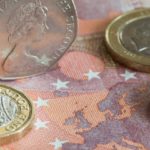The euro was trading steadily and in proximity to its highest point in eight months against the US dollar on Tuesday, as markets expected the September report on US non-farm payrolls, which has initially been scheduled for release on October 4th.
EUR/USD touched a session high at 1.3681 during the early phase of Asian trade, after which consolidation followed at 1.3672, dipping 0.06% for the day. Support was likely to be received at October 21st low, 1.3652, while resistance was to be met at October 18th high and also the highest point since February 4th, 1.3703.
Employers in the US private sector probably added more job positions in September than in August, while the rate of unemployment remained at the lowest level since 2008. Non-farm payrolls increased by 180 000 in September, marking their highest level since April, following the 169 000 new jobs added in August, in accordance with the median estimate of 93 respondents in a survey by Bloomberg News. However, the projected increase in payrolls during September would still be below the average monthly increase of 195 000 during the first six months of this year. Through August, the United States had managed to recover 6.8 million of the 8.7 million lost jobs due to the 18-month recessionary period, which ended in June 2009.
“A strong NFP report is likely to have an asymmetric effect on the prevailing USD bearish sentiment in FX markets and we recommend positioning for this by being short EUR/USD,” strategists led by Aroop Chatterjee wrote in an e-mailed note to clients on Monday, as cited by Bloomberg.
At the same time, the greenback lost ground on a wide scale last week, as concerns appeared that the recently ended partial government shutdown will cause an impact upon the US Gross Domestic Product during the final quarter of the year and also urge the Federal Reserve Bank to delay its plans of scaling back the monthly pace of its monetary stimulus. The central bank will probably delay the first reduction of its asset purchases until March 2014, according to the median estimate of 40 experts in another survey. Polls results in September showed that the first cut would occur in December.
Meanwhile, according to todays issue of “Le Parisien”, France wanted the European Central Bank to interfere in the Foreign Exchange market, as the exchange rate of the euro against the US dollar was quite high. If EUR/USD cross traded 10% lower, this could have added 120 000 new jobs and also reduced nations deficit by 12 billion EUR, according to the French Minister of Industrial Renewal, Arnaud Montebourg in an interview with the above mentioned media. In case the cross lost 20% of its value, this could have added 300 000 new jobs and reduced the deficit figure by one third.
Elsewhere, the euro was slightly higher against the sterling, with EUR/GBP cross advancing 0.07% on a daily basis to trade at 0.8480 at 7:43 GMT. EUR/JPY pair was also higher, gaining 0.09% to trade at 134.47 at 7:45 GMT. The US dollar has dropped 2.8% during the past three months among the 10 developed-nation currencies, which are tracked by Bloomberg Correlation-Weighted Indexes, demonstrating the worst performance within the group. The euro, on the other hand, has gained 1.2%, while the Japanese yen has fallen 1.3%.





